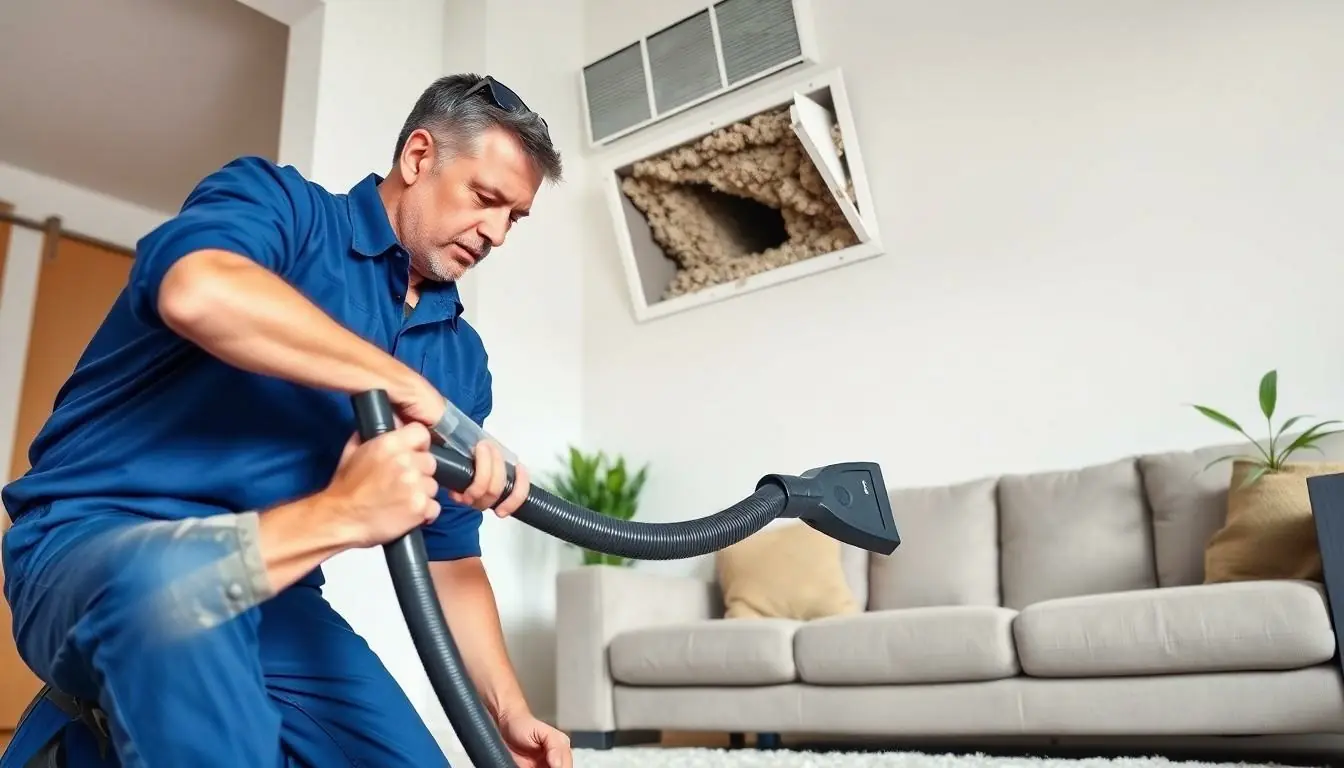In today’s fast-paced world, efficient cleaning has become essential for maintaining a healthy and organized environment. With busy schedules and endless to-do lists, people seek methods that maximize results while minimizing time and effort. Discovering effective cleaning strategies can transform a daunting chore into a manageable task.
From innovative tools to time-saving techniques, efficient cleaning not only enhances the appearance of living spaces but also promotes well-being. By adopting smart cleaning habits, anyone can achieve a spotless home without sacrificing precious hours. Embracing these practices leads to a more enjoyable and stress-free lifestyle, making efficient cleaning a worthwhile investment for everyone.
Table of Contents
ToggleUnderstanding Efficient Cleaning
Efficient cleaning involves adopting strategies and techniques that maximize results while minimizing time and effort. This approach allows individuals to maintain cleanliness effectively and fosters a healthy living environment.
Key Principles of Efficient Cleaning
- Planning
Planning cleaning tasks according to a schedule or checklist ensures all areas receive attention.
- Prioritization
Prioritizing high-traffic areas or frequently used spaces allows for quicker results where they matter most.
- Organization
Keeping cleaning supplies organized saves time. Designated areas for tools and products reduce search time and promote efficiency.
- Use of Technology
Using innovative tools, such as robotic vacuums and steam cleaners, enhances productivity and effectiveness in tackling dirt and grime.
Time-Saving Techniques
- Multi-tasking
Multi-tasking, such as cleaning surfaces while waiting for laundry, optimizes time usage and increases productivity.
- One-step Cleaning
One-step cleaning involves using versatile products that tackle multiple surfaces simultaneously, reducing the need for numerous items.
- Routine Maintenance
Implementing daily maintenance tasks, like wiping down surfaces and quick vacuuming, prevents accumulation and requires less effort over time.
Benefits of Efficient Cleaning
- Enhanced Well-being
A clean environment promotes mental clarity, reduces stress, and enhances overall mood while fostering physical health.
- Increased Productivity
A tidy space improves focus and productivity, enabling individuals to work or relax without distractions.
- Cost-effectiveness
Investing time in efficient cleaning strategies leads to longevity in home furnishings and surfaces, resulting in cost savings on replacements and repairs.
Efficient cleaning transforms chores into manageable tasks, positively impacting both living environments and personal well-being.
Benefits of Efficient Cleaning


Efficient cleaning offers multiple advantages, enhancing overall quality of life. Key benefits include time savings, cost-effectiveness, and improved well-being.
Time Savings
Time savings represent a significant advantage of efficient cleaning practices. Implementing structured routines reduces the overall duration spent on cleaning tasks. For instance, dedicating specific days to particular areas or using tools like robotic vacuums can streamline cleaning efforts. Utilizing multi-tasking techniques, such as combining dusting with vacuuming, further minimizes the time required to maintain a clean environment.
Cost-Effectiveness
Cost-effectiveness emerges as another crucial benefit of efficient cleaning. Regular maintenance prolongs the lifespan of furnishings, reducing the need for replacements. Utilizing versatile cleaning products decreases the number of items needed, lowering overall expenses. Investing in high-quality cleaning equipment can yield long-term savings by enhancing efficiency and effectiveness during cleaning sessions. Reducing the frequency of professional cleaning services also contributes to financial savings over time.
Techniques for Efficient Cleaning
Efficient cleaning hinges on effective organization and the right tools. By implementing strategic techniques, individuals can streamline their cleaning processes.
Organization and Planning
Organizing cleaning tasks and planning efficiently saves time. Prioritize areas based on usage; focus first on high-traffic zones like kitchens and living rooms. Create a cleaning schedule that breaks tasks into manageable segments, specifying daily, weekly, and monthly responsibilities. For instance, tackle dusting every week while deep-cleaning carpets monthly. Ensure cleaning supplies are arranged by category. Storing all items in designated spaces speeds up access and minimizes downtime during cleaning.
Choosing the Right Tools
Selecting appropriate cleaning tools enhances effectiveness. Invest in versatile products, such as microfiber cloths, which can clean various surfaces without scratching. Opt for a vacuum cleaner with multiple attachments to cover different floor types and hard-to-reach areas. Consider specialized tools like squeegees for streak-free windows or steam cleaners for sanitizing surfaces without harsh chemicals. Utilizing technology, robotic vacuums can maintain floor cleanliness regularly with minimal supervision, freeing up time for other activities.
Sustainable Practices in Efficient Cleaning
Sustainable practices in efficient cleaning contribute to both environmental responsibility and enhanced cleaning efficacy. Incorporating eco-friendly cleaning products, energy-efficient appliances, and responsible waste management significantly reduces ecological footprints.
Eco-Friendly Products
- Biodegradable detergents: These cleaners break down naturally, minimizing water pollution.
- Non-toxic cleaners: Safe for use around children and pets, these products reduce health risks.
- DIY solutions: Ingredients like vinegar and baking soda create effective cleaning agents without harsh chemicals.
Energy Efficiency
- Energy-efficient appliances: Tools such as low-energy vacuum cleaners and dishwashers consume less power while maintaining cleaning performance.
- LED lights: Replacing traditional bulbs with LED lights in cleaning spaces reduces electricity consumption.
- Smart technology: Devices programmed to operate during off-peak energy times enhance energy savings.
Waste Management
- Reusable cleaning supplies: Microfiber cloths and washable pads decrease single-use product waste.
- Recycling: Properly disposing of empty containers and spent materials limits landfill contributions.
- Composting: Organic waste from natural cleaning products can enrich soil while minimizing trash output.
Water Conservation
- Low-flow faucets: Installing efficient fixtures reduces water use during cleaning tasks.
- Rinsing techniques: Utilizing buckets for mopping instead of running water limits waste.
- Efficient washing machines: Modern machines use less water while effectively cleaning clothes and other items.
Integrating these sustainable practices into efficient cleaning routines not only promotes a healthier environment but also enhances overall cleaning effectiveness. The combination of eco-friendly products, energy efficiency, responsible waste management, and water conservation establishes a comprehensive approach to cleaning that benefits both the user and the planet.







